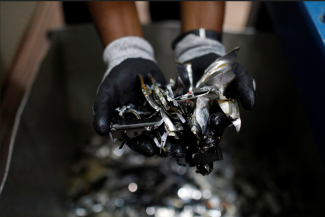|
|
|
|
Dire is the finding from the 2019 Global Assessment Report of the Intergovernmental Science-Policy Platform on Biodiversity and Ecosystem Services. “Human actions threaten more species with global extinction now than ever before.” The assessment is both a clarion call and an indictment.
Something has failed spectacularly in the 1992 Convention on Biological Diversity (CBD) and the 2010 Nagoya Protocol. We believe that something to be “access to genetic resources” and the “fair and equitable sharing of benefits arising from utilization” (ABS), which is the third objective of the Convention and the raison d’être of the Protocol. ABS attempts to align incentives between users and providers of genetic resources. The success of alignment, however, depends on the modality of ABS chosen.
Although the issue is quintessentially economic, the relevant economics has been studiously ignored by the Conference of the Parties to the CBD. Harm from ignorance radiates North and South, in both user and provider countries. Nevertheless, species-rich but capital-poor countries bear the brunt.
Foundational flaws and ordinary meanings
According to the 1969 Vienna Convention on the Law of Treaties, a word undefined in a treaty should be interpreted with its “ordinary meaning” and “in light of its object and purpose.” In the CBD, “genetic material” was defined in terms of “material” and “material” was left undefined. The sloppiness reverberates.
One feels the fallout in the hot-button issue of “digital sequence information.” In 2017, a Fact-Finding and Scoping Study was commissioned, and in 2018 an Ad Hoc Technical Expert Group convened. Although the group disagreed on “genetic material,” consensus did emerge on “digital sequence information”: it was “not the most appropriate term.”
Notably, “some participants were of the view that some or all of these types of information, taken together, can be referred to as ‘natural information’.” When the object of access for benefit sharing is interpreted as “natural information,” economics comes to the fore. Its application implies that multilateralism supplant bilateralism as the modality of ABS.
Delegates from North and South are usually trained in law. They struggle with the economics. One daresay that a majority conflates the economics of tangibles with that of intangibles, and bilateralism with sovereignty. Nothing could be worse for efficiency and equity. The two economics are diametrically opposed. Tangibles justify bilateralism, and intangibles multilateralism.
The economics can be unpacked with a mundane example: furniture. Consider a chair manufactured in the developing world. Tangible factors are the wood, labour and machinery used in its production. The chair also requires a design, which is an intangible. Bilateralism means that any one may copy the design and compete. Multilateralism means that the designer enjoys a measure of protection.
Global Multilateral Benefit-Sharing Mechanism
Ever since Adam Smith economists have celebrated competition as a driver of efficiency and even of equity. Information is the exception. When competition ensues over information, many would-be innovators wait to copy what others have invented. The strategy avoids the fixed costs associated with creation. Should enough suppliers so free ride, the market price will plummet and innovators will not be able to recoup the fixed costs of the invention.
Recognising the inefficiency and inequity of such outcomes, governments institutionalised monopolies over human-made information—i.e. artificial information—through limited-in-time intellectual property rights.
The same logic can apply to genetic resources. Just as governments incentivise the creation of artificial information—for example innovations and creations—through intellectual property rights, governments can incentivise the conservation of natural information through ABS. Because natural information is diffused across jurisdictions, the protection must be oligopolistic rather than monopolistic.
Without such protection, the market price will collapse. The opportunity costs of conservation will remain too high.
Evidence of the race-to-the-bottom comes from a country whose constitution obliges transparency. In 2015, Brazil passed legislation which allows royalties on the utilisation of genetic resources to be as low as 0.1 percent. One should take stock of just how low is 0.1 percent. On a biotechnology with one million dollars of sales, a paltry one thousand dollars of royalties will accrue. On a blockbuster innovation, usually defined as generating sales of one billion US dollars, only one million dollars will accrue.
Brazil is the most mega-diverse country. A floor of 0.1 percent in Brazil will become the standard for bilateral accords worldwide. Although the infinitesimal royalty harms all countries, the most harmed are the least developed countries that are also mega-diverse. One thinks of the Democratic Republic of the Congo or Madagascar.
Could ABS ever drive “resource mobilisation”?
Article 10 of the 2010 Nagoya Protocol asks parties to “consider” modalities of a Global Multilateral Benefit-Sharing Mechanism (GMBSM) for “transboundary situations.” The wording may seem weak but is not. Because matter cannot be in two places at once, implicit in “transboundary” is information. Similarly, the “global” which modifies “mechanism” implies that royalties be set multilaterally.
The fairest sharing of royalty revenues would be a distribution proportional to the geographic area of habitat. For ubiquitous natural information, the revenues collected would finance the necessary infrastructure in taxonomy and species mapping. Until utilisation of a genetic resource results in intellectual property, the natural information flows freely. This modality goes by the handle “bounded openness.”
Should “consider[ation]” of a GMBSM become implementation, Article 10 will upturn fourteen Conferences of the Parties.
Why do users continue to dismiss the GMBSM? And why do providers remain unfazed? The answer is prosaic. Not only are careers and reputations at stake, so too is money.
Worldwide annual sales in biotechnology run into the several hundred billions of US dollars. Revenues from a royalty percentage of 1 to 10 percent—negotiated through the Conference of the Parties—could run into the tens of billions of US dollars per year. The opportunity costs of conservation and sustainable use, Article 1 of the CBD, would finally be offset. “Resource mobilization,” Article 25 of the Nagoya Protocol, would finally be reality. Royalty income would be a countervailing force to proposed changes of land use within capital-poor countries.
ABS in the Aichi Biodiversity Targets and the Post-2020 Biodiversity Framework
In any long list, the most important item is often underappreciated. There are 36 articles in the Nagoya Protocol. Article 10 (GMBSM) is not just one among three dozen, it is the linchpin to both the Protocol and the Convention. Similarly, the Aichi Biodiversity Targets lists twenty targets. Number 16 is the Nagoya Protocol.
Scale matters as much in economics as it does in ecology.
Under bilateral agreements, royalty percentages are so low that users do not willingly disclose them. With that said, the criterion of fairness and equity does not demand any specific percentage. It only demands equal treatment in the protection of artificial and natural information. A Global Multilateral Benefit-Sharing Mechanism levels the playing field.
Improvement in the royalty percentage will depend on how well providers, mostly developing and least developed countries, negotiate as a group. The improvement could be up to two orders of magnitude greater. However, should a provider allow habitat loss, its share in royalty income will decline.
Scale indeed matters. Through significant royalty income on biotechnologies, many of which will owe their existence to the “openness” in “bounded openness,” Article 10 can become the linchpin to not only the Convention on Biological Diversity and the Nagoya Protocol, but also to the post-2020 Global Biodiversity Framework.
-----
Manuel Ruiz Muller is Senior Advisor and Researcher at Sociedad Peruana de Derecho Ambiental. Joseph Henry Vogel is Professor of Economics at Universidad de Puerto Rico-Río Piedras. Klaus Angerer is postdoc at Carl Friedrich von Weizsäcker-Center for Philosophy and History of Science, Berhard Karls Universität Tübingen. Nicolas Pauchard is PhD candidate at the Swiss Graduate School of Public Administration, Université de Lausanne.
Header image of elephants in Tanzania - ©Megan Coughlin via Flickr Creative Commons Attribution-NoDerivs 2.0 Generic (CC BY-ND 2.0) https://creativecommons.org/licenses/by-nd/2.0/
If you would like to reuse any material published here, please let us know by sending an email to EIF Communications: eifcommunications@wto.org.



